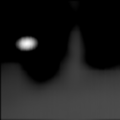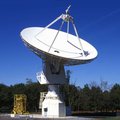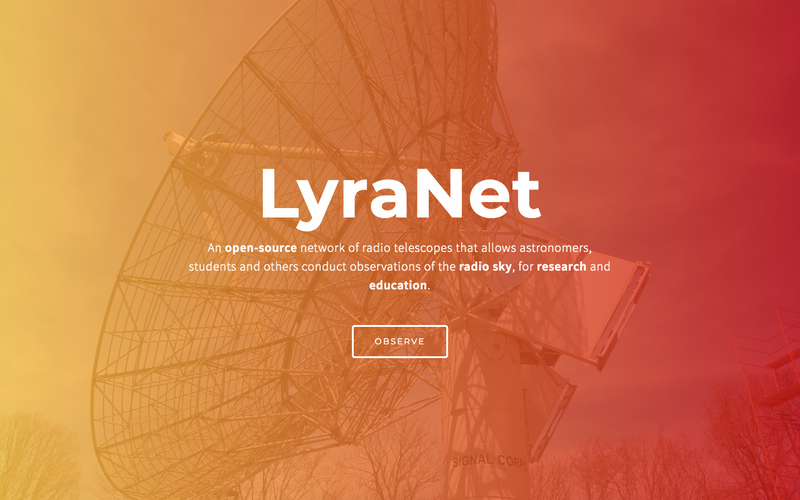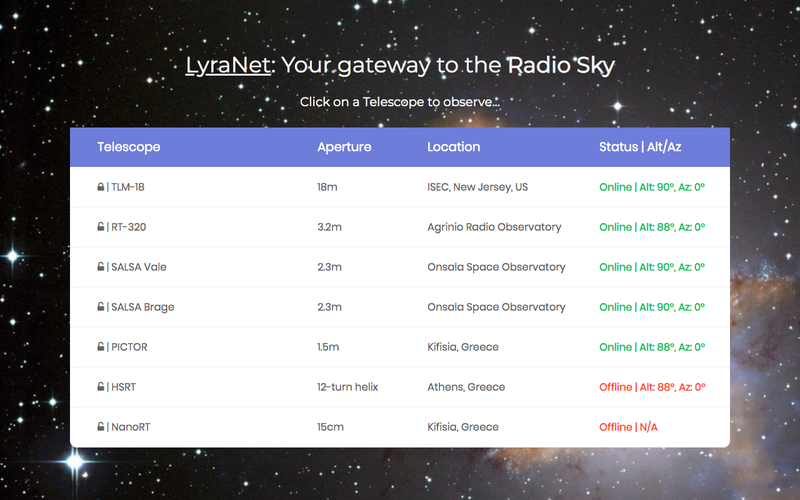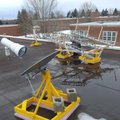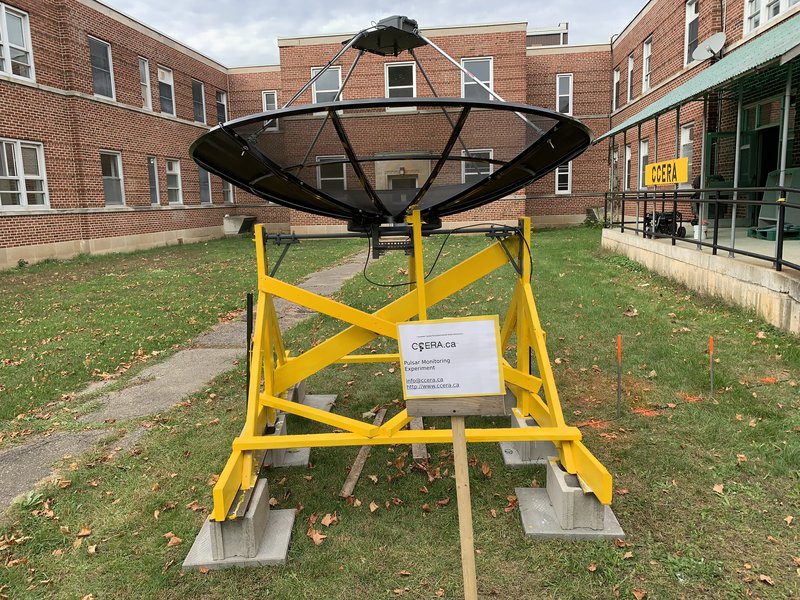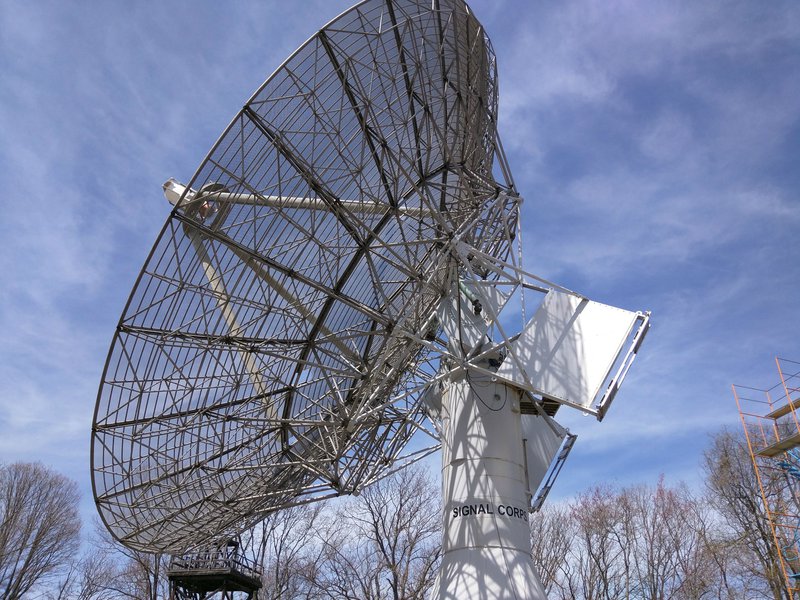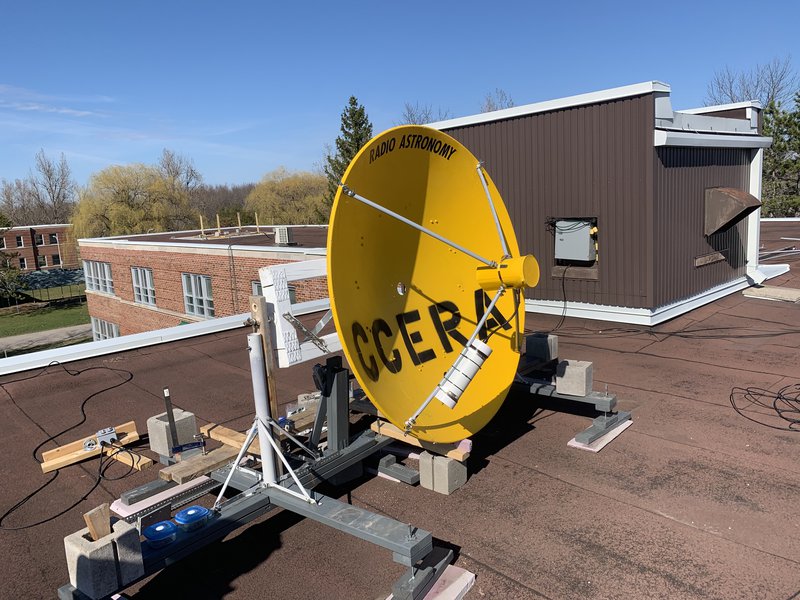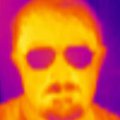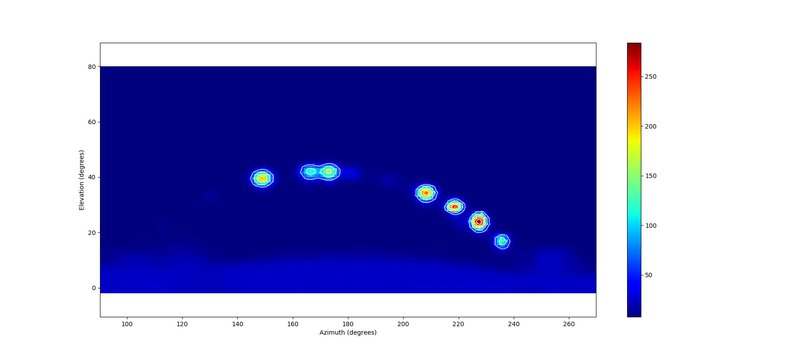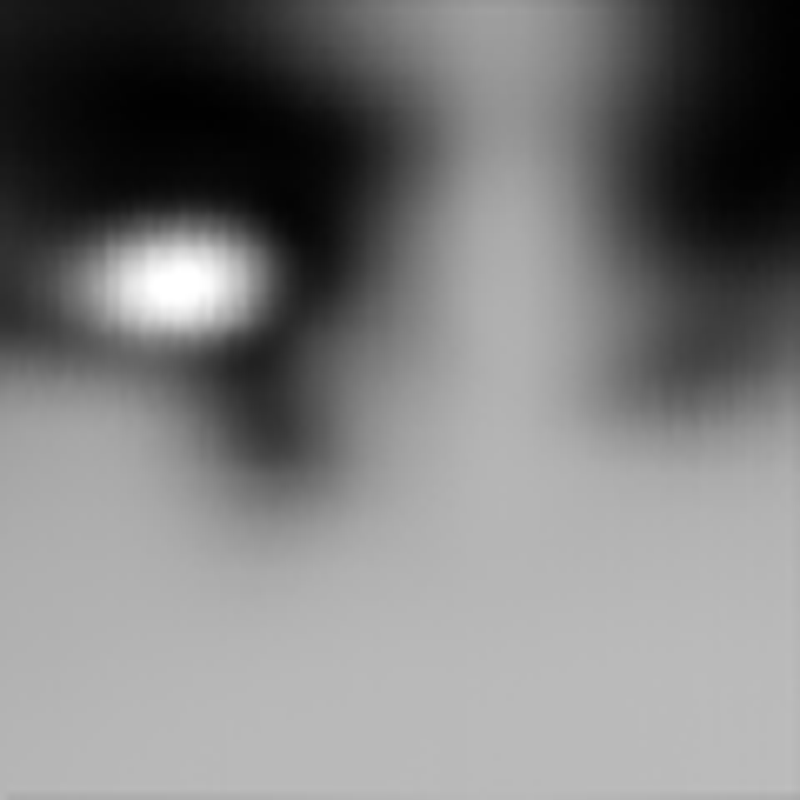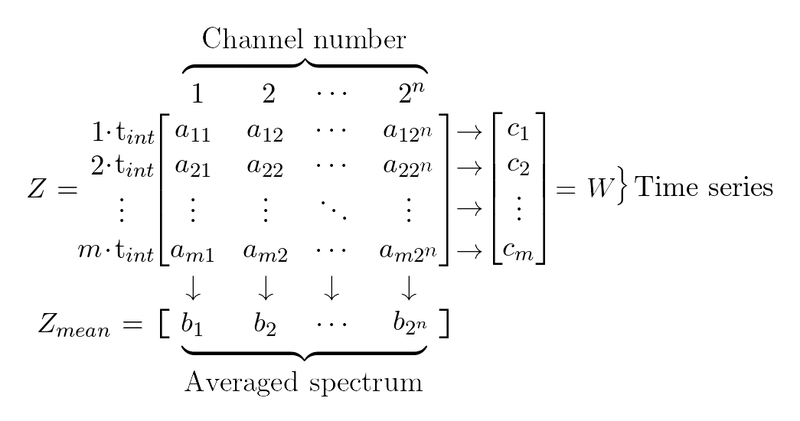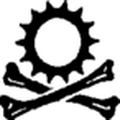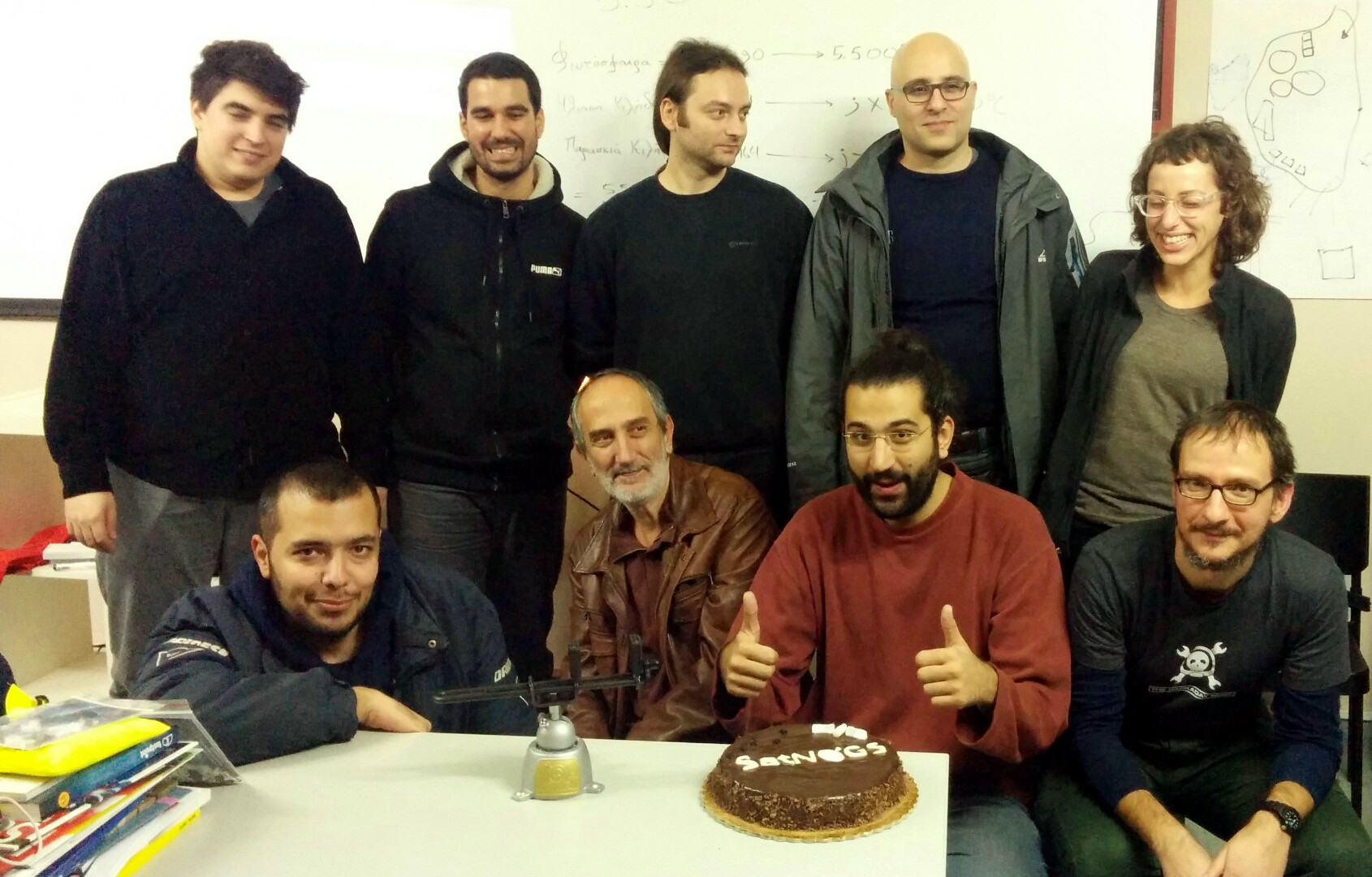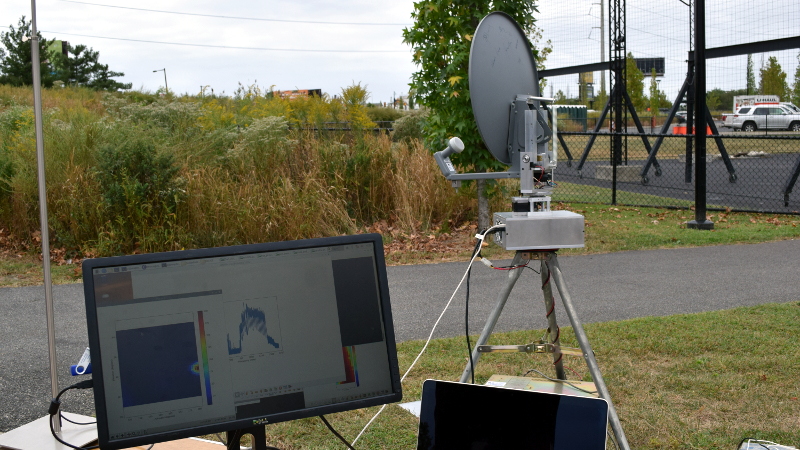-
Hack Chat Transcript, Part 3
02/12/2020 at 21:07 • 0 comments![]() While we're on the subject of data, is there standardized format for collecting data and metadata?
While we're on the subject of data, is there standardized format for collecting data and metadata?![]() for example I might build a station out of curiosity, but then it may lie dormant for days or weeks while my real job gets in the way. During that time, would my station be valuable to others ?
for example I might build a station out of curiosity, but then it may lie dormant for days or weeks while my real job gets in the way. During that time, would my station be valuable to others ?![]() @Frank I noted that one too. You guys are saving me a lot of time. This is hard when you do not know where to look.
@Frank I noted that one too. You guys are saving me a lot of time. This is hard when you do not know where to look.![]() Google-foo to the rescue/
Google-foo to the rescue/![]() @Frank I talk with the SatNOGS guys on a daily basis, but doing something similar for radio astronomy is tricky. However, I haven't given up. Stay tuned...
@Frank I talk with the SatNOGS guys on a daily basis, but doing something similar for radio astronomy is tricky. However, I haven't given up. Stay tuned...![]()
![]()
![]()
![]()
![]() Future plans includes interferometric work, but I still need to figure out how to deal with instrumentation limitations on each telescope.
Future plans includes interferometric work, but I still need to figure out how to deal with instrumentation limitations on each telescope.![]() @Frank good question! I'd like to figure out how to do a kit. The electronics (plus a custom PCB) are the "easy" bit. I tried "Actobotics" for the mechanical initially with the thought that it would easy to specify a parts list for somebody to buy, but it was just frustratingly floppy and got pushed around by the wind, etc, etc
@Frank good question! I'd like to figure out how to do a kit. The electronics (plus a custom PCB) are the "easy" bit. I tried "Actobotics" for the mechanical initially with the thought that it would easy to specify a parts list for somebody to buy, but it was just frustratingly floppy and got pushed around by the wind, etc, etc![]() @0xCoto oh snap !
@0xCoto oh snap !![]() lyranet looks interesting, link?
lyranet looks interesting, link?![]() @Steve Benesko Not ready yet, but send me an email at 0xcoto@protonmail.com if you want me to share it with you when it's ready (probably this month).
@Steve Benesko Not ready yet, but send me an email at 0xcoto@protonmail.com if you want me to share it with you when it's ready (probably this month).![]() @James Aguirre the mechanicals are the tricky part. you can source darn near anything you need from the usual (suspect) sources online, but final assembly is always a headache. I'm thinking something similar to the way you can buy a generic 3DPrinter frame, then throw in your own brain-box and RF gear.
@James Aguirre the mechanicals are the tricky part. you can source darn near anything you need from the usual (suspect) sources online, but final assembly is always a headache. I'm thinking something similar to the way you can buy a generic 3DPrinter frame, then throw in your own brain-box and RF gear.![]()
![]()
![]()
![]()
![]() I'm also planning to do some pulsar monitoring work with this 18m telescope...
I'm also planning to do some pulsar monitoring work with this 18m telescope...![]() Good thing we have an ultra wideband spectrometer (500 MHz), so our sensitivity is significantly maximized.
Good thing we have an ultra wideband spectrometer (500 MHz), so our sensitivity is significantly maximized.![]()
![]()
![]() @0xCoto where can we find more info on this LyraNET?
@0xCoto where can we find more info on this LyraNET?![]() Any suggestions for introductory texts on radio astronomy (something for an undergraduate student?)
Any suggestions for introductory texts on radio astronomy (something for an undergraduate student?)![]() @sjoerd.timmer It's not ready yet I'm afraid... Can you send me an email at 0xcoto@protonmail.com if you want to be notified once it's ready?
@sjoerd.timmer It's not ready yet I'm afraid... Can you send me an email at 0xcoto@protonmail.com if you want to be notified once it's ready?![]() Sounds like there's plenty of interest in backyard RA. Any thoughts on setting up a group for ongoing discussion?
Sounds like there's plenty of interest in backyard RA. Any thoughts on setting up a group for ongoing discussion?![]() @jeremy.lusk These may be useful: https://pictortelescope.com/Observing_the_radio_sky_with_PICTOR.pdf
@jeremy.lusk These may be useful: https://pictortelescope.com/Observing_the_radio_sky_with_PICTOR.pdfhttps://pictortelescope.com/Building_your_very_first_Radio_Telescope.pdf
![]() I just found out that the gravitons I have been working on for the last 40 years are likely the "axions" that many people are working on. All the things I knew were likely - many of them are already worked on by others. The implications are that I can use electronic devices to measure gravity. Since their "axion" is my "graviton". It is a little more messy than that. The field is more like our atmosphere with a mixture of particles with different concentrations and properties. Optical sensors that can take very short exposures of what looks like dark current noise (the lens is covered) can be used as part of "time of flight" or "correlator" or "radar" or "interferometer" networks to scan in 3D. I am just trying to see if anyone is interested. It is hard doing things like that alone. And it needs separated sensors and careful coordination, that the radio astronomers have the background and interest for.
I just found out that the gravitons I have been working on for the last 40 years are likely the "axions" that many people are working on. All the things I knew were likely - many of them are already worked on by others. The implications are that I can use electronic devices to measure gravity. Since their "axion" is my "graviton". It is a little more messy than that. The field is more like our atmosphere with a mixture of particles with different concentrations and properties. Optical sensors that can take very short exposures of what looks like dark current noise (the lens is covered) can be used as part of "time of flight" or "correlator" or "radar" or "interferometer" networks to scan in 3D. I am just trying to see if anyone is interested. It is hard doing things like that alone. And it needs separated sensors and careful coordination, that the radio astronomers have the background and interest for.![]() @Ethan Waldo John Kraus book is still quite relevant. Also NRAO has a lot of course material online.
@Ethan Waldo John Kraus book is still quite relevant. Also NRAO has a lot of course material online.![]() @jeremy.lusk for more theory, there's also Essential Radio Astronomy (Condon & Ransom) and Tools of Radio Astronomy (Rohls and Wilson)
@jeremy.lusk for more theory, there's also Essential Radio Astronomy (Condon & Ransom) and Tools of Radio Astronomy (Rohls and Wilson)![]() I would welcome an ongoing discussion on backyard RA.
I would welcome an ongoing discussion on backyard RA.![]() Kraus is a classic
Kraus is a classic![]() @0xCoto @Canadian Centre for Experimental Radio Astronomy @James Aguirre Thanks!
@0xCoto @Canadian Centre for Experimental Radio Astronomy @James Aguirre Thanks!![]() @Canadian Centre for Experimental Radio Astronomy I was thinking more from builders, open source hardware discussion, etc.
@Canadian Centre for Experimental Radio Astronomy I was thinking more from builders, open source hardware discussion, etc.![]() sorry, Rohlfs
sorry, Rohlfs![]() @James Aguirre Some of the recent work on FRB's seem tantalizing. any chance amateur astronomy has a chance of either participating or of any detection?
@James Aguirre Some of the recent work on FRB's seem tantalizing. any chance amateur astronomy has a chance of either participating or of any detection?![]() Especially that repeating FRB with the 16 day period
Especially that repeating FRB with the 16 day period![]() I had a postdoc ask me that the other day. We went through the numbers, and you need a pretty big dish and a very fast recording device on the backend
I had a postdoc ask me that the other day. We went through the numbers, and you need a pretty big dish and a very fast recording device on the backend![]() the pulses last milliseconds or less
the pulses last milliseconds or less![]() and you want to be recording all the time, lest you miss one
and you want to be recording all the time, lest you miss one![]() @kjansky1 FRB detection requires large-aperture antennas and very high-end digital signal processing instrumentation and algorithms, which end up with a very high necessary budget.
@kjansky1 FRB detection requires large-aperture antennas and very high-end digital signal processing instrumentation and algorithms, which end up with a very high necessary budget.![]() We’re considering building a mini CHIME for a survey for FRBs.
We’re considering building a mini CHIME for a survey for FRBs.![]()
https://en.wikipedia.org/wiki/Fast_radio_burst
Fast radio burst
In radio astronomy, a fast radio burst ( FRB) is a transient radio pulse of length ranging from a fraction of a millisecond to a few milliseconds, caused by some high-energy astrophysical process not yet understood. While extremely energetic at their source, the strength of the signal reaching Earth has been described as 1,000 times less than from a mobile phone on the Moon.
![]() Are FRB's an opening in the landscape where a network of amateur observers could outperform traditional large facilities?
Are FRB's an opening in the landscape where a network of amateur observers could outperform traditional large facilities?![]() the sweet spot seems to be around ~400 MHz, so that makes things a big harder
the sweet spot seems to be around ~400 MHz, so that makes things a big harder![]() So it seems just out-of-scope for the average hobyist...
So it seems just out-of-scope for the average hobyist...![]() What are your guess as to the phenomena?
What are your guess as to the phenomena?![]() I'm planning L-band monitoring of FRB 180916.J0158+65 with the 18-meter dish with a bandwidth of ~500 MHz.
I'm planning L-band monitoring of FRB 180916.J0158+65 with the 18-meter dish with a bandwidth of ~500 MHz.![]() yeah, that's the right kind of scale
yeah, that's the right kind of scale![]() @kjansky1 There are a ton of theories (which indicate the bursts are of astrophysical origin and most likely not related to ET transmissions): http://adsabs.harvard.edu/abs/2018arXiv181005836P
@kjansky1 There are a ton of theories (which indicate the bursts are of astrophysical origin and most likely not related to ET transmissions): http://adsabs.harvard.edu/abs/2018arXiv181005836P![]() SOME FRBs are very bright. Making smaller apertures at least conceptually feasible.
SOME FRBs are very bright. Making smaller apertures at least conceptually feasible.![]() @kjansky1 I'm going with black holes. ;)
@kjansky1 I'm going with black holes. ;)![]() I was working on methods for monitoring to predict when a pulse is starting, the go to high resolution. That seems to work. They use it with some newer security cameras. The cameras have the bandwidth that many other techniques do not. I am trying to adapt their video ADCs (12 to 16 bit) multichannel to other data streams. Why they are good for correlation networks.
I was working on methods for monitoring to predict when a pulse is starting, the go to high resolution. That seems to work. They use it with some newer security cameras. The cameras have the bandwidth that many other techniques do not. I am trying to adapt their video ADCs (12 to 16 bit) multichannel to other data streams. Why they are good for correlation networks.![]() when a pulse is starting, then go to high cadence or tempo or sampling or frame rate. I am trying to look at all the people doing these sorts of things
when a pulse is starting, then go to high cadence or tempo or sampling or frame rate. I am trying to look at all the people doing these sorts of things![]() @RichardCollins You could always constantly record in high resolution and discard if pulse isn't detected
@RichardCollins You could always constantly record in high resolution and discard if pulse isn't detected![]() @Canadian Centre for Experimental Radio Astronomy I've written a de-dispersion algorithm in Python if you need it for real-time FRB candidate analysis.
@Canadian Centre for Experimental Radio Astronomy I've written a de-dispersion algorithm in Python if you need it for real-time FRB candidate analysis.![]() That was a really fast hour, I have to say. Sadly, we have to let Dr. Aguirre get back to work, but everyone should feel free to stick around and continue the chat. I found this really useful and exciting. I've been eyeing a few old Dish network antennas in my neighborhood, so maybe it's time to latch onto one.
That was a really fast hour, I have to say. Sadly, we have to let Dr. Aguirre get back to work, but everyone should feel free to stick around and continue the chat. I found this really useful and exciting. I've been eyeing a few old Dish network antennas in my neighborhood, so maybe it's time to latch onto one.![]() This has been a great chat, wish there was a regular meetup, say monthly.
This has been a great chat, wish there was a regular meetup, say monthly.![]() @Ethan Waldo That is what's generally done, but it's very computationally expensive.
@Ethan Waldo That is what's generally done, but it's very computationally expensive.![]() Curious if the newly -launched solar polar orbiter spacecraft will
Curious if the newly -launched solar polar orbiter spacecraft will open up any new research partnerships/collaborations for RA?
![]() I certainly learned something, and there are a lot of very impressive projects out there!
I certainly learned something, and there are a lot of very impressive projects out there!![]() Great. Thanks for sharing!
Great. Thanks for sharing!![]() Thanks for the opportunity @hackaday.io !! Cheers @James Aguirre !
Thanks for the opportunity @hackaday.io !! Cheers @James Aguirre !![]() @kjansky1 a regular meet-up would be very interesting!
@kjansky1 a regular meet-up would be very interesting!![]() Really great - thanks for T'ing it up - hope we can do it again sometime soon
Really great - thanks for T'ing it up - hope we can do it again sometime soon![]() Thanks so much for giving us your time today @James Aguirre !
Thanks so much for giving us your time today @James Aguirre !![]() yes this has been interesting for me as well, would like a regular meet up to learn more
yes this has been interesting for me as well, would like a regular meet up to learn more![]() thank you for the captivating chat all!
thank you for the captivating chat all!![]() @Dan Twedt Can you elaborate?
@Dan Twedt Can you elaborate?![]() Take care!
Take care!![]() @0xCoto @James Aguirre Thanks!
@0xCoto @James Aguirre Thanks!![]() Don't forget next week's chat:
Don't forget next week's chat:![]()
https://hackaday.io/event/169511-open-source-neuroscience-hardware-hack-chat
![]() Another vote here for a regular meet up.
Another vote here for a regular meet up.![]() Thanks Dan.
Thanks Dan.![]() my pleasure!
my pleasure!![]() We have a Radio Astronomy chat on Discord here: https://discord.gg/eWXf93A
We have a Radio Astronomy chat on Discord here: https://discord.gg/eWXf93A -
Hack Chat Transcript, Part 2
02/12/2020 at 21:06 • 0 comments![]() @0xCoto that's great stuff!
@0xCoto that's great stuff!![]() @Dan Twedt my first paper on SDR radio astronomy was about SETI back in 2004.
@Dan Twedt my first paper on SDR radio astronomy was about SETI back in 2004.![]() That's awesome! A good magnet to the hobby!
That's awesome! A good magnet to the hobby!![]() @James Aguirre You seem to be using a Ku-band LNB, but your last matplotlib plot shows the frequency values ranging up to 1750 MHz. Have you considered calibrating the IF frequency to the RF input frequency given the LO frequency of the LNB's downconverter mixer?
@James Aguirre You seem to be using a Ku-band LNB, but your last matplotlib plot shows the frequency values ranging up to 1750 MHz. Have you considered calibrating the IF frequency to the RF input frequency given the LO frequency of the LNB's downconverter mixer?![]() @James Aguirre that unit you shared up on GitHub... straight gearing for both axes ? or worm gearing ?
@James Aguirre that unit you shared up on GitHub... straight gearing for both axes ? or worm gearing ?![]() Hey, @James Aguirre I built a similar radio telescope a few years ago, but I wasnt able to get any useful results. (https://hackaday.io/project/161556-tiny-radio-telescope). Its a miracle the whole thing worked, its basically made out of duct tape and some stuff from IKEA hahahh
Hey, @James Aguirre I built a similar radio telescope a few years ago, but I wasnt able to get any useful results. (https://hackaday.io/project/161556-tiny-radio-telescope). Its a miracle the whole thing worked, its basically made out of duct tape and some stuff from IKEA hahahh![]() @Frank White Rabbit is what we're using for timing discipline with HERA, but I don't have a lot of experience with it myself
@Frank White Rabbit is what we're using for timing discipline with HERA, but I don't have a lot of experience with it myself![]() @Frank The Azimuth is straight gearing but the elevation is worm gear.
@Frank The Azimuth is straight gearing but the elevation is worm gear.![]() There are SDRs that support WR directly.
There are SDRs that support WR directly.![]() Thanks Brian, that's righ
Thanks Brian, that's righ![]() I usually recommend DIY folks start off with a transit instrument. Driven in elevation only.
I usually recommend DIY folks start off with a transit instrument. Driven in elevation only.![]() I'm curious if you run into computational bottlenecks in amateur radio astronomy. If there are, do those show up as CPU, memory, or storage bottlenecks?
I'm curious if you run into computational bottlenecks in amateur radio astronomy. If there are, do those show up as CPU, memory, or storage bottlenecks?![]() Yeah, the GNURadio conf 2019 in HSV had a few discussions about it, and it's benefit to sync'ing up distributed stations for long baseline stuff. (https://www.gnuradio.org/grcon/grcon19/presentations/vlbi_with_gnu_radio_and_white_rabbit/)
Yeah, the GNURadio conf 2019 in HSV had a few discussions about it, and it's benefit to sync'ing up distributed stations for long baseline stuff. (https://www.gnuradio.org/grcon/grcon19/presentations/vlbi_with_gnu_radio_and_white_rabbit/)![]() @Gonçalo Nespral yeah, I first started really simple using a satellite finder from Radio Shack as the detector (just too squirrelly) and was unhappy with how well I could point it. we probably went a little overboard on the mechanical design :)
@Gonçalo Nespral yeah, I first started really simple using a satellite finder from Radio Shack as the detector (just too squirrelly) and was unhappy with how well I could point it. we probably went a little overboard on the mechanical design :)![]() good evening!
good evening!![]() COU and memory bandwidth are key, depending on what you’re doing and at what bandwidths.
COU and memory bandwidth are key, depending on what you’re doing and at what bandwidths.![]() If you’re streaming raw baseband samples to disk, the. Disk bandwidth becomes a serious issue.
If you’re streaming raw baseband samples to disk, the. Disk bandwidth becomes a serious issue.![]() @jeremy.lusk A lot of digital signal processing (DSP) is performed using FPGA chips that are present in many high-end SDRs. It is useful to do FFT and other computations there so the output data rate is significantly lower and the workload of the CPU/GPU of your machine is reduced. But in certain DSP techniques like parallel beamforming, you just have to cope with the processing requirements needed.
@jeremy.lusk A lot of digital signal processing (DSP) is performed using FPGA chips that are present in many high-end SDRs. It is useful to do FFT and other computations there so the output data rate is significantly lower and the workload of the CPU/GPU of your machine is reduced. But in certain DSP techniques like parallel beamforming, you just have to cope with the processing requirements needed.![]() Can amateur or professional Radio Astronomy be used to do science relevant to determining the extent of possible Anthropogenic RF Atmospheric Heating Effects/Components?
Can amateur or professional Radio Astronomy be used to do science relevant to determining the extent of possible Anthropogenic RF Atmospheric Heating Effects/Components?![]() @0xCoto or you build an FPGA beamformer.
@0xCoto or you build an FPGA beamformer.![]() @0xCoto the SDR in the document you pointed to is the one I've been using (RTLSDR). what are the higher end ones you're thinking of?
@0xCoto the SDR in the document you pointed to is the one I've been using (RTLSDR). what are the higher end ones you're thinking of?![]() @Canadian Centre for Experimental Radio Astronomy @0xCoto Thanks! I have a small cluster computer and students who want to put up a radio telescope and I was hoping there was some overlap there where the cluster could be useful for processing/storage
@Canadian Centre for Experimental Radio Astronomy @0xCoto Thanks! I have a small cluster computer and students who want to put up a radio telescope and I was hoping there was some overlap there where the cluster could be useful for processing/storage![]() @James Aguirre What are you targeting for signals of interest in the home setup?
@James Aguirre What are you targeting for signals of interest in the home setup?![]() @Canadian Centre for Experimental Radio Astronomy Sure, but FPGAs are not always powerful enough to handle samples from several RF inputs.
@Canadian Centre for Experimental Radio Astronomy Sure, but FPGAs are not always powerful enough to handle samples from several RF inputs.![]() @Ethan Waldo so I'd be curious if others have found differently, but at 12 GHz with a 40 cm dish, you're kind of limited
@Ethan Waldo so I'd be curious if others have found differently, but at 12 GHz with a 40 cm dish, you're kind of limited![]() I assume pulsars are still out of reach?
I assume pulsars are still out of reach?![]() Strays of FpGAs are often used professionally.
Strays of FpGAs are often used professionally.![]() You can see the sun no problem, and of course the communication satellites
You can see the sun no problem, and of course the communication satellites![]() The moon.
The moon.![]() yeah, in principle, but I've not done it yet :)
yeah, in principle, but I've not done it yet :)![]() @James Aguirre The USRP series, LimeSDR/LimeSDR Mini/HackRF etc. It depends on your goals. Hydrogen line observations typically don't require very wide instantaneous bandwidths, so the RTL-SDR is a fine instrument for this type of application.
@James Aguirre The USRP series, LimeSDR/LimeSDR Mini/HackRF etc. It depends on your goals. Hydrogen line observations typically don't require very wide instantaneous bandwidths, so the RTL-SDR is a fine instrument for this type of application.![]() Pulsars are doable. But not for a first project.
Pulsars are doable. But not for a first project.![]() CCERA, do you have any involvement with RASC or do outreach at any of the events like starfest?
CCERA, do you have any involvement with RASC or do outreach at any of the events like starfest?![]() I'm also interested to know about more science cases for DIY radio astronomy
I'm also interested to know about more science cases for DIY radio astronomy![]() I interact with local RASC frequently.
I interact with local RASC frequently.![]() what I was trying to do with the small dish was using a lot of bandwidth (~500 MHz) to try to get the noise done, but what I've found it is that any sort of RFI in that band gives me results that are about 100x worse than theoretical
what I was trying to do with the small dish was using a lot of bandwidth (~500 MHz) to try to get the noise done, but what I've found it is that any sort of RFI in that band gives me results that are about 100x worse than theoretical![]() The moon is freaking BRIGHT at 12GHz.
The moon is freaking BRIGHT at 12GHz.![]() CCERA supports an undergraduate astrophysics program at Carleton U.
CCERA supports an undergraduate astrophysics program at Carleton U.![]() (FPGA=Field-Programmable Gate Array)
(FPGA=Field-Programmable Gate Array)![]()
![]()
![]() Some interesting implications to citizen-based SSA (lots of expansions for that term, but space surveillance/space situational awareness) for GEO. Tighter beam and pointing angles and you might even be able to supplement some OD work for those birds... Just need a LOT of coordinated enthusiasts, producing a LOT of measurements, which you filter across...
Some interesting implications to citizen-based SSA (lots of expansions for that term, but space surveillance/space situational awareness) for GEO. Tighter beam and pointing angles and you might even be able to supplement some OD work for those birds... Just need a LOT of coordinated enthusiasts, producing a LOT of measurements, which you filter across...![]() @James Aguirre For total power/total intensity measurements, you can do RFI mitigation in the post-FFT stage to isolate narrowband interference.
@James Aguirre For total power/total intensity measurements, you can do RFI mitigation in the post-FFT stage to isolate narrowband interference.![]() so that's the southern part of the sky from Philadelphia ... all the geostationary satellites jump out
so that's the southern part of the sky from Philadelphia ... all the geostationary satellites jump out![]() the sun's in there, but it's 10x fainter than the satellites at 12 GHz
the sun's in there, but it's 10x fainter than the satellites at 12 GHz![]() the moon is down another factor of ~20
the moon is down another factor of ~20![]() https://groups.io/g/Amateur-DSN/ is another application. I was pretty amazed that they were able to pick up Cassini at one point, overcoming the weak signal through some tricks of seeing through the noise.
https://groups.io/g/Amateur-DSN/ is another application. I was pretty amazed that they were able to pick up Cassini at one point, overcoming the weak signal through some tricks of seeing through the noise.![]() @james Ken Tapping has had success finding Tau A at 11Ghz with 6ft dish. He’s at DRAO but also The Godfather of backyard radio astronomy.
@james Ken Tapping has had success finding Tau A at 11Ghz with 6ft dish. He’s at DRAO but also The Godfather of backyard radio astronomy.![]() if the aviation ADSB industry has taught us anything... people will pay for large groups of everyday people to monitor certain frequencies... and there's even some bragging rights about building a clean enough system to rank higher in the number of observations you pull in.
if the aviation ADSB industry has taught us anything... people will pay for large groups of everyday people to monitor certain frequencies... and there's even some bragging rights about building a clean enough system to rank higher in the number of observations you pull in.![]() @James Aguirre This is the software used for PICTOR (https://pictortelescope.com/ - https://github.com/0xCoto/PICTOR): https://github.com/0xCoto/VIRGO
@James Aguirre This is the software used for PICTOR (https://pictortelescope.com/ - https://github.com/0xCoto/PICTOR): https://github.com/0xCoto/VIRGOIn the last figure, you can just null the entire column of the dynamic spectrum matrix that contains RFI, so you shouldn't have problems with wideband spectrometers, as long as ADC clipping is not a problem.
![]() @0xCoto im also looking into spectral kurtosis estimates to drive masking.
@0xCoto im also looking into spectral kurtosis estimates to drive masking.![]()
![]()
![]() @Canadian Centre for Experimental Radio Astronomy I'm curious to look into what you guys are up to ... just browsing the page.
@Canadian Centre for Experimental Radio Astronomy I'm curious to look into what you guys are up to ... just browsing the page.![]() James, sorry I am late, I was making a video and just finished. I read the notes to catch up
James, sorry I am late, I was making a video and just finished. I read the notes to catch upAre people all planning to share their data?
I am interested in calibration, statistics on raw signals, and any datastream from 1 MHz down to 1 nanoHertz
I cannot build these, I live in a tiny apartment, but I can help with calibrations. I want to write statistical compression algorithms to handle large raw streams that need to be compressed without losing anything -- to share.
![]() Automatic Dependent Surveillance-Broadcast (ADS-B)
Automatic Dependent Surveillance-Broadcast (ADS-B)![]() the gain in going to a bigger telescope is a lot: a 6 foot dish is 25 times more sensitive
the gain in going to a bigger telescope is a lot: a 6 foot dish is 25 times more sensitive![]() than the 40 cm dish network ones
than the 40 cm dish network ones![]() (part of my motivation was portable: take it to classroom and science festivals and the like)
(part of my motivation was portable: take it to classroom and science festivals and the like)![]() Is anyone aware of phased array use by amateurs for a faster pointing and scanning capability possibly to do C-band imaging comparable to the Ku band imaging?
Is anyone aware of phased array use by amateurs for a faster pointing and scanning capability possibly to do C-band imaging comparable to the Ku band imaging?![]() @kjansky1 Sure, this is exactly what I meant by beamforming.
@kjansky1 Sure, this is exactly what I meant by beamforming.![]() So, are folks sharing raw IQ for this particular form of RF receiving ? and if so, how do you compress it for reasonable storage and data transfer... 'cause all my IQ for LEO satellite Doppler work is HUGE!
So, are folks sharing raw IQ for this particular form of RF receiving ? and if so, how do you compress it for reasonable storage and data transfer... 'cause all my IQ for LEO satellite Doppler work is HUGE!![]() That is the moon as seen by my 90cm dish. Trees and bushes around it.
That is the moon as seen by my 90cm dish. Trees and bushes around it.![]() @kjansky1 im not aware of any amateur efforts but we’re on the cusp technologically.
@kjansky1 im not aware of any amateur efforts but we’re on the cusp technologically.![]() Ku band is going to increasingly be garbage due to StarLink
Ku band is going to increasingly be garbage due to StarLink![]() Any "time of flight" method will be useful. I am checking TOF cameras to see if they are able to pick up the low frequency magnetic signals. I just got two today. Been at that for the last 8 months or so.
Any "time of flight" method will be useful. I am checking TOF cameras to see if they are able to pick up the low frequency magnetic signals. I just got two today. Been at that for the last 8 months or so.![]() @Frank Storing raw I/Q data is bad practice, particularly for these sorts of radio astronomy applications (excluding interferometry of course where the raw I/Q data need to be added into correctors etc.). Instead, the FFT samples are stored to file as a function of time (i.e. a dynamic waterfall which can be plotted). Data reduction is significant here: https://github.com/0xCoto/VIRGO
@Frank Storing raw I/Q data is bad practice, particularly for these sorts of radio astronomy applications (excluding interferometry of course where the raw I/Q data need to be added into correctors etc.). Instead, the FFT samples are stored to file as a function of time (i.e. a dynamic waterfall which can be plotted). Data reduction is significant here: https://github.com/0xCoto/VIRGO![]()
![]()
![]() This is basically what VIRGO stores to file (no I/Q data).
This is basically what VIRGO stores to file (no I/Q data).![]() @0xCoto thx for that link !
@0xCoto thx for that link !![]() I am looking for those kinds of datasets
I am looking for those kinds of datasets![]() (Just the Z matrix - Z_mean and W are computed afterwards)
(Just the Z matrix - Z_mean and W are computed afterwards)![]() We Ran a two element interferometer for a while at 611 Mhz
We Ran a two element interferometer for a while at 611 Mhz![]() (I/Q data shows the changes in magnitude (or amplitude) and phase of a sine wave.)
(I/Q data shows the changes in magnitude (or amplitude) and phase of a sine wave.)![]() @0xCoto cool stuff! the issue I was struggling with is that if you're looking at continuum (like the sun or moon), the SDR bandwidths are 2 - 10 MHz, whereas the backend of the LNA's are 500 - 800 MHz. If the full band is pretty clean, that's up to 20 times more sensitive. but I think you're right that going with a narrower, clean band from the SDR is a net win
@0xCoto cool stuff! the issue I was struggling with is that if you're looking at continuum (like the sun or moon), the SDR bandwidths are 2 - 10 MHz, whereas the backend of the LNA's are 500 - 800 MHz. If the full band is pretty clean, that's up to 20 times more sensitive. but I think you're right that going with a narrower, clean band from the SDR is a net win![]() Why does the Moon emit so much on 12 GHz? Is it a source, or is it reflecting back from Earth or the Sun?
Why does the Moon emit so much on 12 GHz? Is it a source, or is it reflecting back from Earth or the Sun?![]() @Dan Maloney Thermal blackbody radiation.
@Dan Maloney Thermal blackbody radiation.![]() @Dan Maloney its a black body with a mean temp of around 200K at 11Ghz.
@Dan Maloney its a black body with a mean temp of around 200K at 11Ghz.![]() Temp varies a bit with phase.
Temp varies a bit with phase.![]() Ah, OK. Didn't know that Thanks!
Ah, OK. Didn't know that Thanks!![]() and sun and earth variations
and sun and earth variations![]() @Joseph Eoff Nice!
@Joseph Eoff Nice!![]() In fact, the radio full moon appears around 3 days out of phase after the full moon in the visible regime.
In fact, the radio full moon appears around 3 days out of phase after the full moon in the visible regime.![]() So do you see a difference in moon brightness between full and new moon 2 12 GHz.?
So do you see a difference in moon brightness between full and new moon 2 12 GHz.?![]() are folks finding any particular LNB more useful (and available for purchase) than others ? It's kind of the wild west out there on sourcing stuff, and as always YMMV.
are folks finding any particular LNB more useful (and available for purchase) than others ? It's kind of the wild west out there on sourcing stuff, and as always YMMV.![]() Due to the heat transfer between the surface layers of the sun.
Due to the heat transfer between the surface layers of the sun.![]() of the moon*
of the moon*![]() @kjansky1 Due to optical depth being a function of wavelength, yes. But the difference is small. If we're talking about intensity, the moon is brighter at 12 GHz due to the blackbody radiation curve of the Moon being closer to 12 GHz than 2 GHz.
@kjansky1 Due to optical depth being a function of wavelength, yes. But the difference is small. If we're talking about intensity, the moon is brighter at 12 GHz due to the blackbody radiation curve of the Moon being closer to 12 GHz than 2 GHz.![]() @James Aguirre If your SDR is wideband (e.g. sensitive in the output RF range of the LNA), you can isolate narrowband RFI and still exploit the rest of the spectrum efficiently with DSP techniques.
@James Aguirre If your SDR is wideband (e.g. sensitive in the output RF range of the LNA), you can isolate narrowband RFI and still exploit the rest of the spectrum efficiently with DSP techniques.![]() @James Aguirre So have many EDU orgs reached out to you about best practices for using your project in teaching ? Have some been looking for "kit form" versions that they can use to streamline the builds ?
@James Aguirre So have many EDU orgs reached out to you about best practices for using your project in teaching ? Have some been looking for "kit form" versions that they can use to streamline the builds ?![]() I think you answered this, but are people "renting" their telescopes?
I think you answered this, but are people "renting" their telescopes?I would like to piggyback and run statististics on what other people are doing. If I do archived data, it seldom gets back to anyone while they are looking and interested.
![]() @kjansky1: I haven't taken the time to check the difference.
@kjansky1: I haven't taken the time to check the difference.![]() @Frank I bought my LNBs from a cheap hardware store. Cannot complain so far, but I do not have a high demand on them.
@Frank I bought my LNBs from a cheap hardware store. Cannot complain so far, but I do not have a high demand on them.![]() I've got it set up both ways: I can stream from the SDR (2 MHz instantaneous band), but also another tee runs into a wideband filter and amplifier and then just gets power detected into a single voltage.
I've got it set up both ways: I can stream from the SDR (2 MHz instantaneous band), but also another tee runs into a wideband filter and amplifier and then just gets power detected into a single voltage.![]() @RichardCollins PICTOR is a free-to-use open source radio telescope. Feel free to observe with it directly here: https://pictortelescope.com/
@RichardCollins PICTOR is a free-to-use open source radio telescope. Feel free to observe with it directly here: https://pictortelescope.com/![]() yeah - curious about the LNBs: I've not tried disassembling the commercial ones but they're fine if you give them a DC voltage and just treat them as a black box
yeah - curious about the LNBs: I've not tried disassembling the commercial ones but they're fine if you give them a DC voltage and just treat them as a black box![]() The problem with a small
The problem with a smallDish is that the sidelobes aren’t that well suppressed so Sat signals can still ruin your day even when you’re not pointing at the Clarke belt.
![]() @RichardCollins that's kind of why I brought up the SATNOGS comparison. They make their network of ground stations usefull for distributed folks to downlink their telem. Wonder if the same pattern (network of resources) can benefit those researching in this field.
@RichardCollins that's kind of why I brought up the SATNOGS comparison. They make their network of ground stations usefull for distributed folks to downlink their telem. Wonder if the same pattern (network of resources) can benefit those researching in this field.![]() The DC voltage is necessary to power up the local oscillator for the mixer needed to downconvert RF to IF.
The DC voltage is necessary to power up the local oscillator for the mixer needed to downconvert RF to IF.![]() @0xCoto I noticed that before and saved the link. I plan to look closer when we are done here. Thanks!!
@0xCoto I noticed that before and saved the link. I plan to look closer when we are done here. Thanks!!Hack Chat Transcript, Part 1
02/12/2020 at 21:05 • 0 commentsvideo telescopes are going to kill the radio telescopes
![]() Great! Looking forward. I've also built my own free-to-use open source radio telescope for anyone wishing to observe the radio sky for free without building their own instruments: https://pictortelescope.com/ & https://github.com/0xCoto/PICTOR
Great! Looking forward. I've also built my own free-to-use open source radio telescope for anyone wishing to observe the radio sky for free without building their own instruments: https://pictortelescope.com/ & https://github.com/0xCoto/PICTOR![]() neat
neat![]() @0xCoto: That's three now that I've gotten to see. Yours, the one Dr. Aguirre built, and mine.
@0xCoto: That's three now that I've gotten to see. Yours, the one Dr. Aguirre built, and mine.![]() Awesome, got a link to yours?
Awesome, got a link to yours?![]() Blog posts: https://josepheoff.github.io/posts/rfcamera
Blog posts: https://josepheoff.github.io/posts/rfcamera![]() Anybody have any open source plans for a 70m?
Anybody have any open source plans for a 70m?![]() 70m?
70m?![]() Hardware: https://github.com/JosephEoff/Karl-PCB
Hardware: https://github.com/JosephEoff/Karl-PCB![]() You know, like https://en.wikipedia.org/wiki/Yevpatoria_RT-70_radio_telescope
You know, like https://en.wikipedia.org/wiki/Yevpatoria_RT-70_radio_telescope![]() Software: https://github.com/JosephEoff/Grote and https://github.com/JosephEoff/scanner
Software: https://github.com/JosephEoff/Grote and https://github.com/JosephEoff/scanner![]() @Ethan Waldo Well I don't have a 70-meter antenna, so...
@Ethan Waldo Well I don't have a 70-meter antenna, so...![]() I also wrote my own software for my radio telescope: https://github.com/0xCoto/VIRGO
I also wrote my own software for my radio telescope: https://github.com/0xCoto/VIRGO![]() Very few folks have the space for a 70m dish. That's bigger than my house.
Very few folks have the space for a 70m dish. That's bigger than my house.![]() My attempts at humor have failed....
My attempts at humor have failed....![]() @0xCoto: In just the three examples I've seen, there's three different set of hardware. You are working with an SDR and doing frequency analysis. Dr. Aguirre used a commercial RF level detector, and I built my own level detector.
@0xCoto: In just the three examples I've seen, there's three different set of hardware. You are working with an SDR and doing frequency analysis. Dr. Aguirre used a commercial RF level detector, and I built my own level detector.![]() Do you guys do any time coding?
Do you guys do any time coding?![]() @Joseph Eoff No reason to stick to a radiometer when you can derive the same data and more with a spectrometer. :)
@Joseph Eoff No reason to stick to a radiometer when you can derive the same data and more with a spectrometer. :)![]() Hey Marcus!
Hey Marcus!![]() I just find the differences in the concepts between the three rigs fascinating.
I just find the differences in the concepts between the three rigs fascinating.![]() Hey.
Hey.![]() I just posted in the FB permaculture group about this chat. Anyone here from there?--73 de KK6VDR
I just posted in the FB permaculture group about this chat. Anyone here from there?--73 de KK6VDR![]() We have several DIY radio telescopes. And a technical memo Series about some of them and the techniques we are using.
We have several DIY radio telescopes. And a technical memo Series about some of them and the techniques we are using.![]() I wrote one of the first DIY radio telescope articles using RTLSDR several years ago now. On our website.
I wrote one of the first DIY radio telescope articles using RTLSDR several years ago now. On our website.![]() Radio astronomy at the backyard level is unlike optical. You can’t go to a Walmart and buy a radio telescope.
Radio astronomy at the backyard level is unlike optical. You can’t go to a Walmart and buy a radio telescope.![]() i hope this hack chat motivates me to get back into radio astronomy. last I experimented with was in August last year. Made a manual picture of the sun on a very overcast day. https://hvdnnotebook.blogspot.com/2019/08/presentation-radio-astronomy.html
i hope this hack chat motivates me to get back into radio astronomy. last I experimented with was in August last year. Made a manual picture of the sun on a very overcast day. https://hvdnnotebook.blogspot.com/2019/08/presentation-radio-astronomy.html![]() Now that things like Direct TV dishes are in short supply what alternatives are you guys using?
Now that things like Direct TV dishes are in short supply what alternatives are you guys using?![]() Hey! I also build a small scale radio telescope a couple of years ago, and its on my hackaday page if anyone wants to check it out. I also started building a larger one, able to observe the Hydrogen line, but it got expensive rlly fast haha :( .... I actually got some help from @0xCoto (thanks!)
Hey! I also build a small scale radio telescope a couple of years ago, and its on my hackaday page if anyone wants to check it out. I also started building a larger one, able to observe the Hydrogen line, but it got expensive rlly fast haha :( .... I actually got some help from @0xCoto (thanks!)![]() You can still buy dishes online. 1.5m offset are routinely available on eBay.
You can still buy dishes online. 1.5m offset are routinely available on eBay.![]() I wonder if anyone has ever combined a tracking telescope with solar energy collection and/or a dome-shaped greenhouse?
I wonder if anyone has ever combined a tracking telescope with solar energy collection and/or a dome-shaped greenhouse?![]() At VHF you can build or buy Yagis
At VHF you can build or buy Yagis![]() FTA stuff on ebay is 90cm and 1.2m. Kinda small though.
FTA stuff on ebay is 90cm and 1.2m. Kinda small though.![]() Hopefully this hack chat motivates me to get back in radio astronomy
Hopefully this hack chat motivates me to get back in radio astronomy![]() You can still buy larger dishes online, just not on eBay.
You can still buy larger dishes online, just not on eBay.![]() Lots of Big Ugly Dishes sitting in people’s back yard having not been used since 1995.
Lots of Big Ugly Dishes sitting in people’s back yard having not been used since 1995.![]() An advantage of an FFT approach is that you can apply a spectral mask prior to computing total power even if you’re not doing spectral work.
An advantage of an FFT approach is that you can apply a spectral mask prior to computing total power even if you’re not doing spectral work.![]() Greetings, all! Welcome to the Hack Chat. Not sure if Dr. Aguirre is logged in yet - he said he had a meeting just before this, so he should be along soon. We'll kick off when he logs on. Until then, enjoy the pre-chat!
Greetings, all! Welcome to the Hack Chat. Not sure if Dr. Aguirre is logged in yet - he said he had a meeting just before this, so he should be along soon. We'll kick off when he logs on. Until then, enjoy the pre-chat!![]() Ty. (FFT=Fast Fourier transform)
Ty. (FFT=Fast Fourier transform)![]() I went on a binge on Facebook Marketplace and Craigslist looking for dish's for an "art project" this part summer. Ended up with an overwhelming response of dish donation options. Scored some nice Wildblue dishes which were popular in my area for satellite based internet back in the day. Moral = Free dishes are there for the asking!
I went on a binge on Facebook Marketplace and Craigslist looking for dish's for an "art project" this part summer. Ended up with an overwhelming response of dish donation options. Scored some nice Wildblue dishes which were popular in my area for satellite based internet back in the day. Moral = Free dishes are there for the asking!![]() You can even offer to take old ones off of roofs, although that's tricky if you don't know what you're doing - could result in leaks.
You can even offer to take old ones off of roofs, although that's tricky if you don't know what you're doing - could result in leaks.![]() yeah, I see DISH network ones on the side of the road *all the time*
yeah, I see DISH network ones on the side of the road *all the time*![]() I would like to get a "Big Ugly Dish" and a big round trampoline frame free for the hauling somewhere.
I would like to get a "Big Ugly Dish" and a big round trampoline frame free for the hauling somewhere.![]() ^ that too, easy, just take the dish and leave what ever it's attached too
^ that too, easy, just take the dish and leave what ever it's attached too![]() @Dan Maloney or an injury not covered under insurance :)
@Dan Maloney or an injury not covered under insurance :)![]() IIRC, the installer puts a "pitch pad" down under the bracket that seals the holes made by the mounting screws
IIRC, the installer puts a "pitch pad" down under the bracket that seals the holes made by the mounting screws![]() Hello @James Aguirre ! Welcome to the Hack Chat!
Hello @James Aguirre ! Welcome to the Hack Chat!![]() Hello!
Hello!![]() I tried that once lol found it on Facebook Marketplace. Spent an hour with a random family trying to get the dish off and it never came off.
I tried that once lol found it on Facebook Marketplace. Spent an hour with a random family trying to get the dish off and it never came off.![]() We can get started now, although we've been having a great chat on sourcing Dish network antennas.
We can get started now, although we've been having a great chat on sourcing Dish network antennas.![]() Great! Dish network or DirectTV is what I've been using
Great! Dish network or DirectTV is what I've been using![]() Can you perhaps kick us off by telling us a little about your background and how you got interested in homebrew radio astronomy?
Can you perhaps kick us off by telling us a little about your background and how you got interested in homebrew radio astronomy?![]() Hi everybody!
Hi everybody!![]() hi!
hi!![]() hey!
hey!![]() Hi!
Hi!![]() Hi!
Hi!![]() I'm potentially going to embarrass myself because this is - more or less - what I do professionally, but of course at a completely different scale.
I'm potentially going to embarrass myself because this is - more or less - what I do professionally, but of course at a completely different scale.![]() Hi Dan - I'm a radio ham in Cape Town South Africa and I've been following the progress of the KAT project
Hi Dan - I'm a radio ham in Cape Town South Africa and I've been following the progress of the KAT project![]() WOW
WOW![]() My apologies - but just a novice who's keen to learn and spread the word
My apologies - but just a novice who's keen to learn and spread the word![]() I'm with Allan but I'd love to be on the level you are James
I'm with Allan but I'd love to be on the level you are James![]() I'm a professor at the University of Pennsylvania and have been building various kinds of telescopes at non-optical wavelengths for about 20 years, but I wanted to do something small scale that I could use to teach and show students how it all works
I'm a professor at the University of Pennsylvania and have been building various kinds of telescopes at non-optical wavelengths for about 20 years, but I wanted to do something small scale that I could use to teach and show students how it all works![]() @James Aguirre - true, but that leads to interesting questions about the differences between the "big stuff" and what you can accomplish at home
@James Aguirre - true, but that leads to interesting questions about the differences between the "big stuff" and what you can accomplish at home![]() @Dan Maloney these days, the gap is narrowing! :)
@Dan Maloney these days, the gap is narrowing! :)![]() is the _the_ Karl Jansky @kjansky1?
is the _the_ Karl Jansky @kjansky1?![]() @Allan one of the projects I work on is quite close to KAT at the site in the Karoo
@Allan one of the projects I work on is quite close to KAT at the site in the Karoo![]() His alter ego unfortunately!
His alter ego unfortunately!![]() Well I hope you can stand the heat
Well I hope you can stand the heat![]() It's called HERA http://reionization.org/
It's called HERA http://reionization.org/![]() I've not been there in some years - I'm due for a trip back
I've not been there in some years - I'm due for a trip back![]() Oh awesome project.
Oh awesome project.![]() Thanks James - I'll take a look
Thanks James - I'll take a look![]() Curious if you'll get to this, but what are your thoughts on the potential impact of large numbers of "small scale backyard units" that are knit together into a cooperative network.... kind of like what SATNOGS did (build a backbone network of lots of "small scale" observers)
Curious if you'll get to this, but what are your thoughts on the potential impact of large numbers of "small scale backyard units" that are knit together into a cooperative network.... kind of like what SATNOGS did (build a backbone network of lots of "small scale" observers)![]() A lot of the work has been software: we generate something like 2 TB of data a night, and we're not at full scale yet
A lot of the work has been software: we generate something like 2 TB of data a night, and we're not at full scale yet![]() @Frank googling SATNOGS now ...
@Frank googling SATNOGS now ...![]()
https://en.wikipedia.org/wiki/KAT-7--Awesome!
![]() @Frank that would be awesome,
@Frank that would be awesome,![]() "I'm due for a trip back" - excellent - look forward to seeing you
"I'm due for a trip back" - excellent - look forward to seeing you![]() oh, basically they democratized ground stations for VHF and UHF (and some S-band) for anyone flying "amateur" science payloads on cubesats, etc...
oh, basically they democratized ground stations for VHF and UHF (and some S-band) for anyone flying "amateur" science payloads on cubesats, etc...![]()
https://hackaday.com/2015/02/19/ground-stations-are-just-the-beginning-the-satnogs-story/
Ground Stations Are Just The Beginning: The SatNOGS Story
When you think of satellites, you may think of the Space Shuttle extending its robot arm with a huge piece of high-tech equipment waiting to pirouette into orbit. This misconception is similar to picturing huge mainframes when thinking about computers. The future (and arguably even the present) reality of satellites is smaller, cheaper, and more prolific.
![]() yes, but basically telemetry instead of signal combining
yes, but basically telemetry instead of signal combining![]() At what redshift frequency would you think that the reionization band will occur?
At what redshift frequency would you think that the reionization band will occur?![]() @Frank The problem is combining the signals requires top-notch equipment since timing information (for proper phase correlation) is crucial.
@Frank The problem is combining the signals requires top-notch equipment since timing information (for proper phase correlation) is crucial.![]() the biggest benefit is that hey have a coordinated network to bring the vast numbers (~400+) of observers into some form of cohesive value.
the biggest benefit is that hey have a coordinated network to bring the vast numbers (~400+) of observers into some form of cohesive value.![]() Can I put a question on the table?
Can I put a question on the table?![]() What sort of hardware are you looking at to network and harvest the data?
What sort of hardware are you looking at to network and harvest the data?![]() @0xCoto yup... but there too there can be effort to sync with GPS (and other) 1ppm accuracy... or is that not sufficient ?
@0xCoto yup... but there too there can be effort to sync with GPS (and other) 1ppm accuracy... or is that not sufficient ?![]() right - so if you just want to monitor satellites, then each antenna can be "independent" and it's just a question of putting all that data in one place to be useful. @0xCoto is right that actually combining the signals as an interferometer (like HERA or EHT) is a whole other kettle of fish ...
right - so if you just want to monitor satellites, then each antenna can be "independent" and it's just a question of putting all that data in one place to be useful. @0xCoto is right that actually combining the signals as an interferometer (like HERA or EHT) is a whole other kettle of fish ...![]() Timing accuracy depends on the frequency of operation.
Timing accuracy depends on the frequency of operation.![]() @allan - Take a look at this for a primer:
@allan - Take a look at this for a primer:![]()
https://hackaday.com/2019/10/22/a-miniature-radio-telescope-in-every-backyard/
A Miniature Radio Telescope In Every Backyard
You probably wouldn't expect to see somebody making astronomical observations during a cloudy day in the center of a dense urban area, but that's exactly what was happening at the recent 2019 Philadelphia Mini Maker Faire.
![]() @kjansky1 the rest frequency of the hydrogen emission is 1420 MHz, and it gets stretched by a factor of about 10 in coming to us, so we're looking at around 150 MHz
@kjansky1 the rest frequency of the hydrogen emission is 1420 MHz, and it gets stretched by a factor of about 10 in coming to us, so we're looking at around 150 MHz![]() If anyone's interested, I've written a guide on building your own radio telescope from scratch: https://pictortelescope.com/Building_your_very_first_Radio_Telescope.pdf
If anyone's interested, I've written a guide on building your own radio telescope from scratch: https://pictortelescope.com/Building_your_very_first_Radio_Telescope.pdf![]() cool - thanks Dan
cool - thanks Dan![]() And rest assured that I'll be posting a transcript after the chat in case you need to refer back for links and such
And rest assured that I'll be posting a transcript after the chat in case you need to refer back for links and such![]() I'll just add that I've got (some) more practically useful info and software at https://github.com/UPennEoR/MiniRadioTelescope
I'll just add that I've got (some) more practically useful info and software at https://github.com/UPennEoR/MiniRadioTelescope![]() throwing out the "Deeper and Deeper down to wonderland"... White Rabbit ? https://ohwr.org/projects/white-rabbit sync at sub nano done at looong baselines.
throwing out the "Deeper and Deeper down to wonderland"... White Rabbit ? https://ohwr.org/projects/white-rabbit sync at sub nano done at looong baselines.![]() There's a definitely a lot missing but the goal is to eventually have enough info there that anyone could copy what we've done
There's a definitely a lot missing but the goal is to eventually have enough info there that anyone could copy what we've done![]() Do DIY Radio Telescope people cross over into SETI/CETI activities much?
Do DIY Radio Telescope people cross over into SETI/CETI activities much?![]() Http://www.ccera.ca has a lot of info as well.
Http://www.ccera.ca has a lot of info as well.![]()
 Lutetium
Lutetium